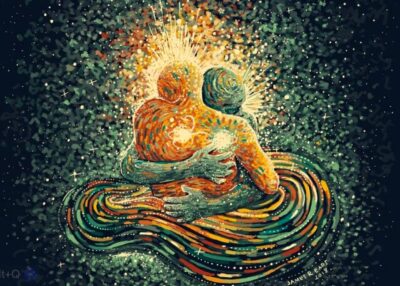
Put down that endless to-do list and step away from the organisational apps because multitasking is officially bad for your wellbeing.
We’re all busy and guilty of juggling too many important things at once – especially now, in the run up to Christmas. It’s not uncommon for me to be attempting to do at least five things at once, with varying degrees of success. Just last week, I dropped one of the many balls I’d been juggling and ended up in a teary heap after the school run; clearly, multitasking isn’t working for me.
There’s evidence to support my theory that multitasking is actually making life more difficult for us all. Here’s the lowdown on why you shouldn’t feel bad for doing one thing at a time.
Why multitasking doesn’t work
In our fast-paced, hectic lives, we’re all guilty of trying to do many different things at the same time. In fact, with a focus on productivity and output, it’s pretty much #LifeGoals to have a million things on the go.
But neuroscience disagrees. “For the vast majority of people and situations, when we think we are multitasking, we are most likely to be attention switching instead,” explains neurologist Dr Faye Begeti, aka @the_braindoctor. “Rather than doing two tasks simultaneously, we are instead quickly switching our attention from one to another very rapidly.”
The result is reduced, rather than improved performance.
It’s not effective
“Rather than being productive, multitasking is actually counterproductive and efficiency is much reduced,” warns Begeti. “In addition to the reduced time efficiency, it takes greater effort to continuously attention-switch than it does to complete tasks sequentially, as it increases load on our working memory which is a finite resource and that extra cognitive load may be very mentally draining.”
And there’s more bad news…
You’re not as good at it as you think you are
“Multitasking has been the subject of a lot of research, with practically universal agreement that it’s an inefficient process for our brain,” says Begeti. “Research shows that the perception of ability to multitask was highly inflated, with significantly more participants estimating that their multitasking ability was above average. This indicates that we have an inflated perception of our ability to multitask.”
Different tasks use different parts of our brains
“Complex tasks rely on a part of the brain called the prefrontal cortex,” explains Begeti. “It’s simply not possible to do complex tasks concurrently, so our brain switches between them instead.”
Simple, habitual tasks, however, can be completed simultaneously, which is why it’s perfectly possible to be drinking your morning latte while walking to work chatting to a friend. So it’s important to think about exactly what it is you’re trying to achieve when you’re feeling swamped.
What about media multitasking?
If you’re one of those people who can’t concentrate on a TV show without also scrolling on your phone, or you’re guilty of checking social media every five minutes while you’re working, you’ll be interested to read (if you can focus for long enough) that you’re not alone.
“Media multitasking is a specific type of multitasking where two types of media are used simultaneously,” explains Begeti. “Studies show that those who are heavy media multitaskers perform at the same level as light media multitaskers when no other distractions are present,” she says, “However, when distractions are introduced, heavy media multitaskers are unable to ignore them and their performance worsens. It then continues to worsen as more distractions are introduced.”
So, you may think you’re concentrating on The Crown, but googling Jonny Lee Miller at the same time is distracting you.
What can we do instead?
Try the exact opposite: monotasking. “It’s OK to give our brains some space in an increasingly demanding world,” advises Begeti. “Having time to think can lead to new ideas and connections – that’s why you can have great ideas in the shower.”
It’s a form of mindfulness
Ever feel guilty that you’re not making time for mindfulness and meditation? There’s good news.
“Singletasking can also be a form of mindfulness,” says Begeti. “For example, the other day I was folding up baby laundry, a daily occurrence for me currently due to a very vomitty baby, and it was incredible to notice how small everything was and enjoy being present in the moment of looking after a tiny human, who won’t be so tiny forever. It was an experience that would have passed me by if my attention was elsewhere.”
Two birds, one stone.
When and how to multitask
That’s not to say that we can’t ever do more than one thing at a time; there are specific scenarios where multitasking is relatively simple for our brains. Begeti advises there are specific criteria for safe multitasking.
When it makes a task more enjoyable
Enjoy listening to a podcast whilst cleaning the house? Go right ahead. “I personally most commonly multitask by listening to podcasts while I’m doing household chores,” says Begeti. “While I don’t get as much out of what I’m listening to and my cleaning speed is likely reduced, I find it’s worth it to make monotonous tasks more enjoyable.
When performance is not important
“Multitasking will always impair performance,” advises Begeti, “Just because we are able to multitask, it doesn’t mean that we should.” But if no one is going to care if the task you’re busy with isn’t done perfectly, then it’s OK to let your mind wander to other jobs.
When a task is straightforward and repetitive
Frequently tasks such as household chores can be carried out using the habitual part of our brains, so we’re essentially on autopilot, therefore not putting undue stress on our grey matter.
When our job absolutely requires it
Emergency workers such as doctors and firefighters clearly need to be able to think fast. “Some jobs require us to multitask or, more accurately, attention-switch, where we flick our attention between multiple things,” explains Begeti. “This is definitely the case in my day job where I manage multiple patients and constantly prioritise according to urgency. That being said, while this is important in dealing with emergencies, a complex diagnosis will still necessitate giving the patient my undivided attention.”
Put simply, the majority of us could do with less attention-switching behaviour and more monotasking. Something to bear in mind over the festive season, and beyond – if only for your brain’s sake.
Original article here




